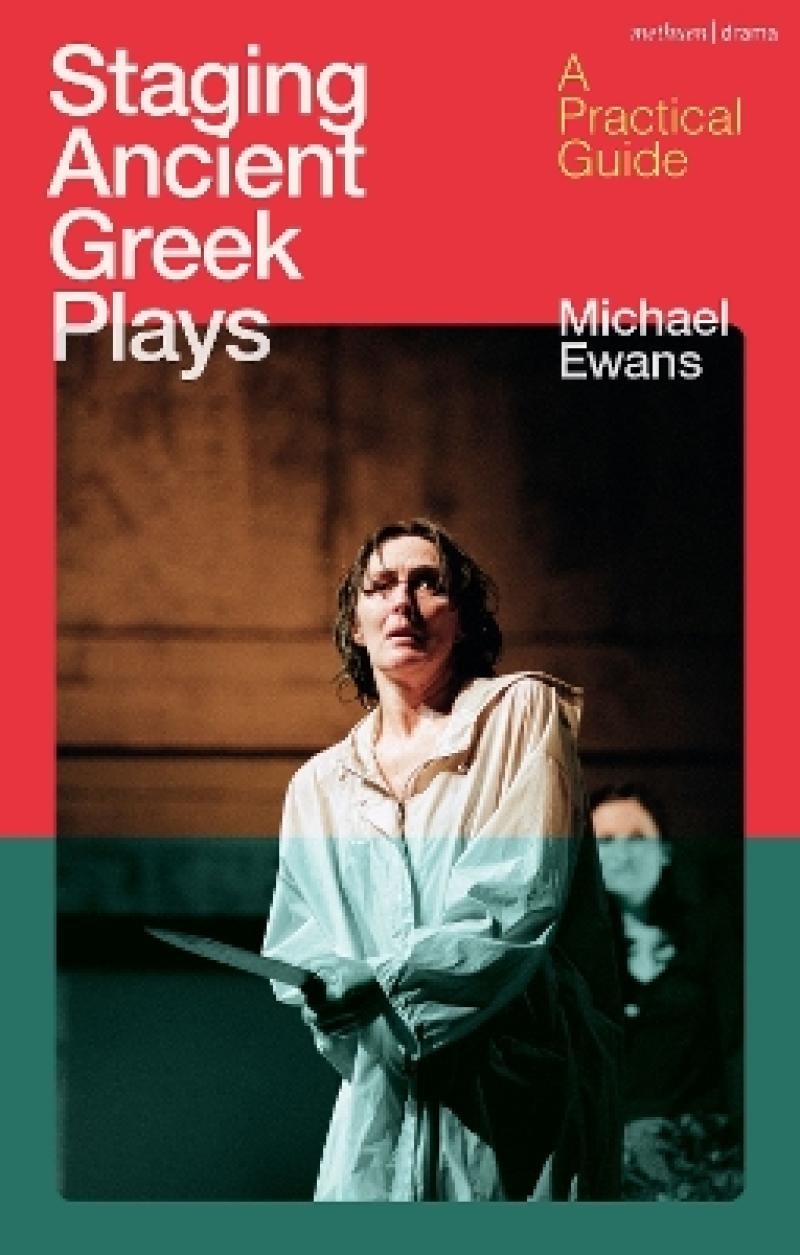An excellent handbook for whoever is looking to delve deeper into the culture and the theatre tradition that created some of the most iconic characters and plays ever written. Ewans’ insightful introduction prepares and empowers aspiring practitioners for their exploration of ancient Greek drama.
Emily Louizou, Theatre Director & Artistic Director of Collide Theatre Ltd
This is, happily, a comprehensive handbook and an excellent factotum guide for anyone thinking of trying to convey an ancient Greek comedy or tragedy on the modern stage. It is aimed squarely at the dramatic practitioner rather than the academic Classicist.
The Journal of Classics Teaching
Merging the theoretical framework with the practical elements of staging an ancient Greek play, this indispensable guide offers directors and actors an excellent starting point for mounting their production.
Considering the conditions of ancient Greek performance and the conventions of the Greek theatre, the book examines large questions, including those related to ancient Greek values, myth and the individual (‘characterization’), and the gods and fate – all of which must be taken into consideration when approaching a contemporary production.
This practical guide also explores with analysed examples, the issues that today's theatre-makers should consider in order to successfully stage ancient Greek drama.
These topics include:
- choice of translation
- setting
- costumes
- masks
- mode of delivery
- acting style for both tragedy and comedy
- handling of the chorus
- solutions to staging Greek drama
Preface
Notation
Dates
Spelling
Introduction: Adaptation and Interpretation
Chapter One: The Original Conditions of Performance
1.1 The Festivals of Dionysos
1.2 Performance Practice
1.3 The Playing Space
1.3.1 Theatron and Orchestra
1.3.2 The Skene
1.4 Staging Conventions
1.5 Costumes and Masks
1.6 Actors
1.7 The Choros
1.8 ‘Realistic’ or ‘Stylized’?
Chapter Two: Values, Myth and the Individual, the Gods and Moira
2.1 Greek and Modern Values
2.2 Myth and the Individual
2.3 The Gods and Daimones
2.4 Moira
2.5 Comedy
2.6 Modern Performance
Chapter Three: Performing Greek Drama on the Modern Stage
3.1 Translation
3.1.1 Introduction
3.1.2 Desiderata
3.1.3 Comedy
3.2 Setting, Costumes and Masks
3.2.1 ‘Ancient’ or Modern?
3.2.2 Desiderata
3.3 Speech and Song
3.4 Acting
3.4.1 Tragedy
3.4.1.2 Solo Speech
3.4.1.3 Dialogue and Three-actor Scenes
3.4.1.4 Props
3.4.1.5 Conclusion
3.4.2 Comedy
3.4.2.1 The In-Law in The Women’s Festival
3.4.2.2 A lazzo in Frogs
3.4.2.3 Props
3.4.2.4 Conclusion
3.5 The Choros
3.5.1 Introduction
3.5.2 Tragedy
3.5.2.1 A Choral Ode
3.5.2.2 A Lyric Scene
3.5.2.3 A Lyric/dialogue Scene
3.5.2.4 Conclusion
3.5.3 Comedy
3.5.3.1 A Choros Divided
3.5.3.2 The Parabasis
2.5.3.3 Conclusion
3.6 Performing Greek Drama on an End-on Stage
3.6.1 Comedy: Peace (2009)
3.6.2 Tragedy: Medea (2021)
3.6.3 Conclusion
3.7 Adieu
Glossary of Greek words
Recommended reading
Works cited
Appendix 1: Synopses of the Extant Tragedies and Comedies
Appendix 2: Some Audio-Visual Resources
Index

